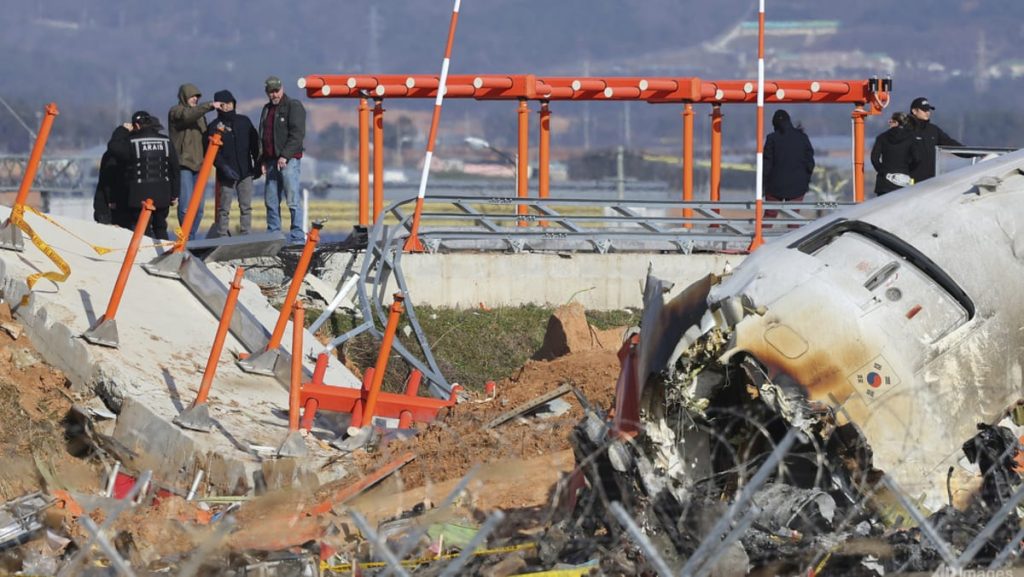The somber atmosphere at the airport thickened with mounting impatience on Tuesday as grieving families awaited the release of their loved ones’ remains following the devastating plane crash. Exhaustion etched on their faces, they huddled together, clinging to shared grief and flickering hope. Park Han-shin, one of the bereaved, attempted to reassure the anxious crowd, explaining that the bodies, currently preserved in freezers, were being prepared for transport to funeral homes. However, he cautioned that the process was intricate and would require time, urging patience and understanding amidst the collective sorrow. The agonizing wait underscored the profound impact of the tragedy, leaving families suspended in a limbo of grief, yearning for closure and the opportunity to begin the arduous process of mourning.
The National Police Agency, acutely aware of the families’ anguish, affirmed its unwavering commitment to expedite the identification of the remaining five unidentified bodies. Recognizing the urgency of the situation, the agency deployed additional personnel and state-of-the-art equipment, including rapid DNA analyzers, to accelerate the identification process. This technological boost aimed to bring closure to the waiting families as swiftly as possible, allowing them to begin the painful but necessary journey of grieving and remembrance. The meticulous nature of forensic identification, coupled with the emotional weight of the tragedy, created a palpable tension as families yearned for answers and the return of their loved ones.
Meanwhile, investigators continued their relentless pursuit of answers, meticulously examining the recovered flight data recorder, commonly known as the “black box.” A significant setback emerged when it was discovered that a crucial connector was missing, complicating the data extraction process. Undeterred, authorities launched a comprehensive review to determine the optimal method for retrieving the vital information stored within the recorder. Simultaneously, encouraging news arrived from the investigation into the cockpit voice recorder, with data retrieval successfully underway. This development offered a glimmer of hope, suggesting that crucial insights into the final moments of the flight might soon be unveiled, potentially revealing the cause of the tragic crash and providing some measure of closure for the grieving families.
The scope of the investigation extended beyond the immediate crash site, encompassing a comprehensive review of the entire South Korean airline industry. Authorities announced that inspections of all 101 Boeing 737-800 aircraft operated by domestic airlines were slated for completion by January 3rd. While this thorough examination was expected to provide valuable insights into potential safety concerns, the airport itself remained closed until January 7th, disrupting travel plans and underscoring the far-reaching impact of the tragedy. This comprehensive approach aimed to prevent future incidents and reassure the public about the safety of air travel within the country.
International collaboration played a vital role in the investigation, with representatives from the US National Transportation Safety Board (NTSB), the Federal Aviation Administration (FAA), and Boeing, the aircraft manufacturer, joining forces with South Korean authorities. The NTSB dispatched a team of three investigators, including specialists in operational factors and airworthiness, to assist with the investigation. Jennifer Homendy, chair of the NTSB, emphasized the agency’s commitment to providing further support as needed, highlighting the importance of international cooperation in uncovering the truth behind the tragic incident. This collaborative effort brought together a diverse range of expertise, ensuring a comprehensive and thorough investigation.
In response to the devastating crash, South Korea’s Acting President Choi Sang-mok took decisive action, ordering an emergency safety inspection of the country’s entire airline operation. This sweeping directive demonstrated the government’s commitment to prioritizing aviation safety and preventing future tragedies. This comprehensive review aimed to identify any systemic issues within the industry and implement necessary corrective measures to ensure the safety and well-being of all air travelers. The nation grappled with the aftermath of the tragedy, united in grief and determined to learn from the devastating loss. The investigation continued, driven by a collective desire for answers, accountability, and a renewed commitment to aviation safety.

